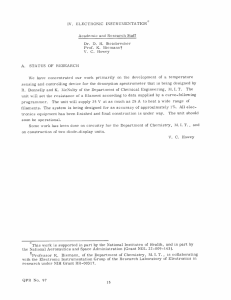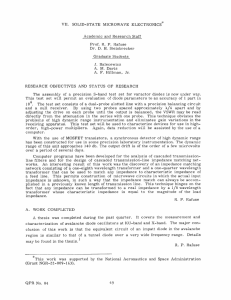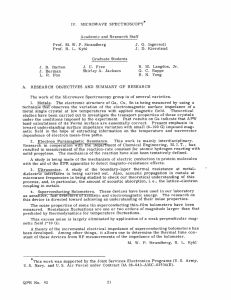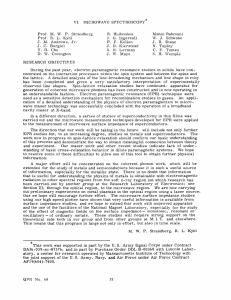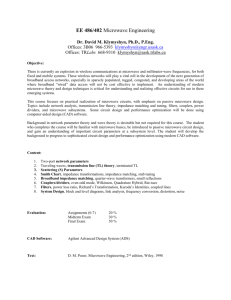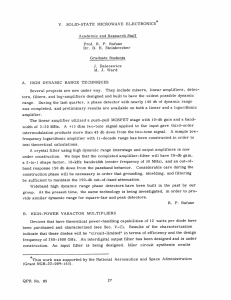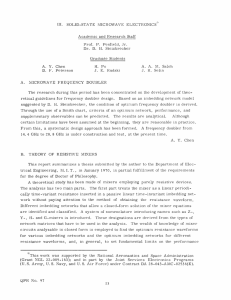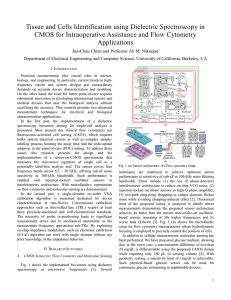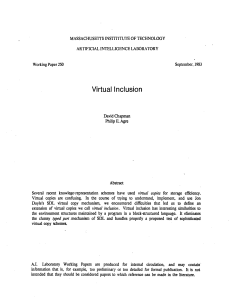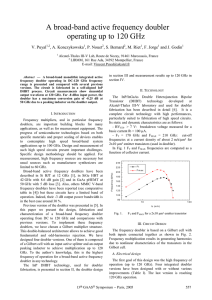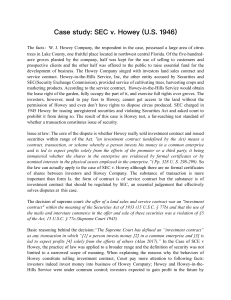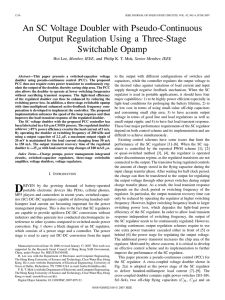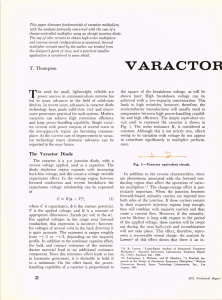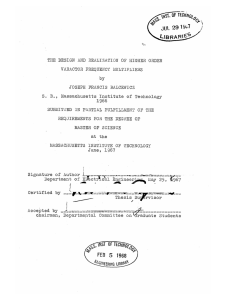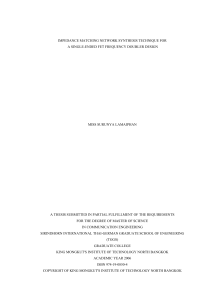III. SOLID-STATE MICROWAVE ELECTRONICS*
advertisement
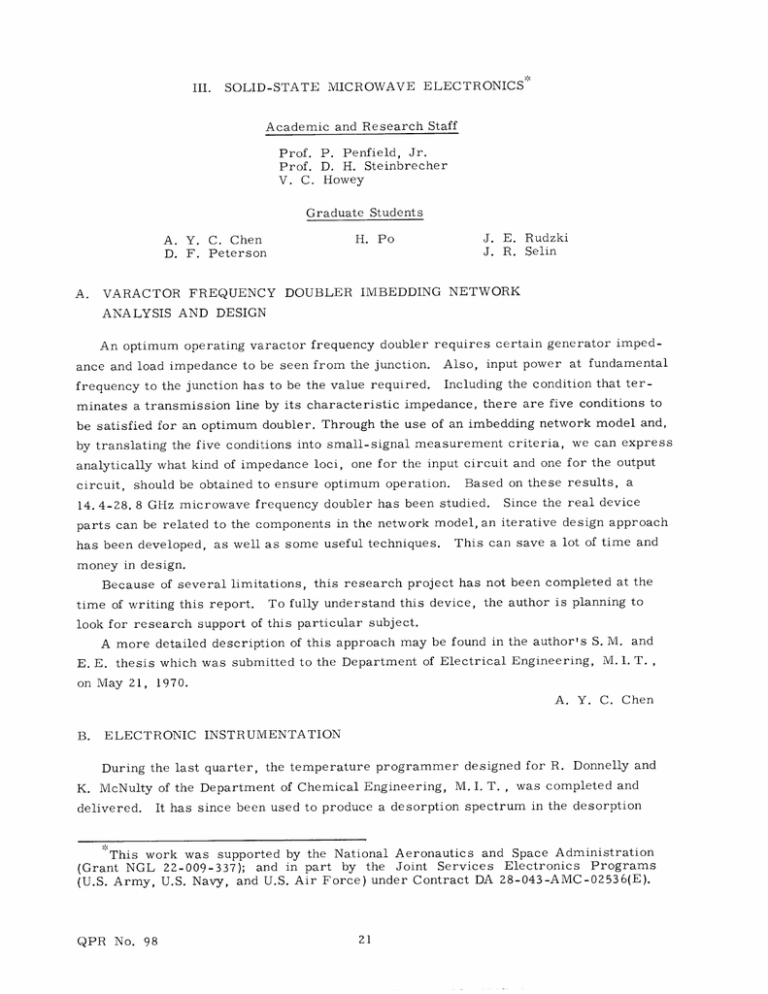
III. SOLID-STATE MICROWAVE ELECTRONICS* Academic and Research Staff Prof. P. Penfield, Jr. Prof. D. H. Steinbrecher V. C. Howey Graduate Students A. Y. C. Chen D. F. Peterson A. H. Po J. E. Rudzki J. R. Selin VARACTOR FREQUENCY DOUBLER IMBEDDING NETWORK ANALYSIS AND DESIGN An optimum operating varactor frequency doubler requires certain generator impedance and load impedance to be seen from the junction. Also, input power at fundamental frequency to the junction has to be the value required. Including the condition that terminates a transmission line by its characteristic impedance, there are five conditions to be satisfied for an optimum doubler. Through the use of an imbedding network model and, by translating the five conditions into small-signal measurement criteria, we can express analytically what kind of impedance loci, one for the input circuit and one for the output circuit, should be obtained to ensure optimum operation. Based on these results, a 14. 4-28. 8 GHz microwave frequency doubler has been studied. Since the real device parts can be related to the components in the network model, an iterative design approach has been developed, as well as some useful techniques. This can save a lot of time and money in design. Because of several limitations, this research project has not been completed at the time of writing this report. To fully understand this device, the author is planning to look for research support of this particular subject. A more detailed description of this approach may be found in the author's S. M. and E. E. thesis which was submitted to the Department of Electrical Engineering, M. I. T., on May 21, 1970. A. Y. C. Chen B. ELECTRONIC INSTRUMENTATION During the last quarter, the temperature programmer designed for R. Donnelly and K. McNulty of the Department of Chemical Engineering, M. I. T. , was completed and delivered. It has since been used to produce a desorption spectrum in the desorption This work was supported by the National Aeronautics and Space Administration (Grant NGL 22-009-337); and in part by the Joint Services Electronics Programs (U.S. Army, U.S. Navy, and U.S. Air Force) under Contract DA 28-043-AMC-02536(E). QPR No. 98 (III. SOLID-STATE MICROWAVE ELECTRONICS) spectrometer built by R. Donnelly. Alejandro Chu has completed work on a series of Gaussian filters for N. Mancuso of the Department of Chemistry. The filters eliminate noise from a series of pulses containing data from mass spectrometric plates. A study based on statistical informa- tion determined the filter giving the best compromise between noise reduction and pulse resolution. An instrument package containing 7 amplifiers and time-delay switching circuitry was completed and delivered to J. Biller of the Department of Chemistry for use on a mass spectrometer. V. C. Howey QPR No. 98
